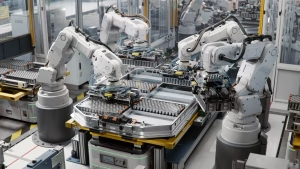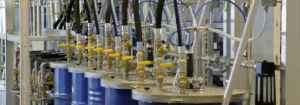Electric motors, crucial components in countless industrial and commercial applications, require precise control of their rotational speed for optimal performance. Speed regulation, the process of adjusting this speed, is achieved through various methods, each with its own advantages and disadvantages.
Common Methods of Speed Regulation
- Voltage Control:
- Resistance: While simple to implement, adding resistance to the motor circuit is inefficient due to power dissipation as heat. This method is often used in low-power applications where efficiency is not a primary concern.
- Choppers: Electronic switches (choppers) create a pulsed DC voltage that can be averaged to control the motor’s speed. This method is more efficient than resistance and is commonly used in applications requiring moderate speed control.
- Frequency Control:
- Inverters: By generating variable-frequency AC power, inverters can precisely control the motor’s speed. This method is highly efficient and offers excellent control accuracy, making it the preferred choice for many industrial applications.
- Field Control:
- DC Motors: In DC motors, the field current can be adjusted to change the motor’s speed. Reducing the field current increases the speed, while increasing it decreases the speed. This method is often used for applications where a wide range of speeds is required.
Factors Affecting Speed Regulation
- Motor Type: Different motor types have varying characteristics that influence speed regulation. For example, induction motors are more sensitive to frequency changes than DC motors.
- Load Conditions: The load on the motor affects its speed. A heavier load requires more power to maintain a constant speed, which may necessitate adjustments to the control system.
- Control Method: The chosen speed regulation method determines the accuracy and efficiency of the control. Some methods are better suited for certain applications than others.
Applications of Speed Regulation
Speed regulation is essential in a wide range of industries and applications, including:
- Manufacturing: Conveyor belts, machine tools, and assembly lines rely on precise speed control for efficient production.
- Transportation: Electric vehicles, elevators, and escalators use speed regulation to ensure smooth and safe operation.
- Energy Generation: Wind turbines and hydroelectric power plants utilize speed regulation to optimize energy output.
- Household Appliances: Washing machines, dryers, and refrigerators employ speed control for improved performance and energy efficiency.
Future Trends in Speed Regulation
As technology advances, new methods and techniques for speed regulation are emerging. These include:
- Advanced Control Algorithms: The development of more sophisticated control algorithms is enabling more precise and efficient speed regulation.
- Sensorless Control: Sensorless control techniques eliminate the need for external sensors, reducing costs and improving reliability.
- Integration with Renewable Energy Systems: Speed regulation plays a crucial role in integrating renewable energy sources, such as wind and solar power, into the electrical grid.
In conclusion, speed regulation of electric motors is a critical aspect of their operation. By understanding the various methods and factors involved, engineers can select the most suitable approach for specific applications, ensuring efficient, reliable, and precise performance. As technology continues to evolve, we can expect further advancements in speed regulation techniques to meet the growing demands of various industries.
For further insights and detailed technical information, consult the Pocket Guide to Air Motors by Atlas Copco or Contact us directly.


